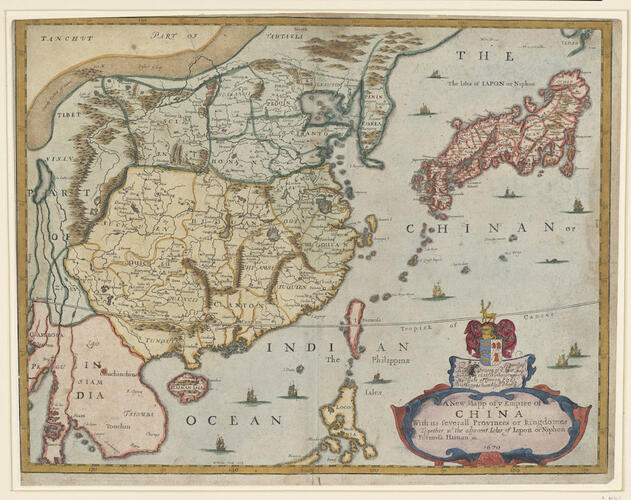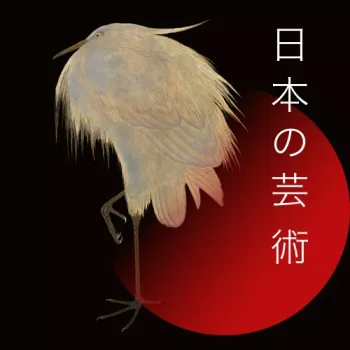A New Mapp of y Empire of CHINA...Together w.th the adjacent Isles of Iapon or Niphon... dated 1670
Hand-coloured etching | 30.8 x 39.5 cm (sheet of paper) | RCIN 802529
-
Hollar’s ‘new mapp’ was first produced in 1669 for Richard Blome’s volume, A Geographical Description of the Four Parts of the World …. That book, which was intended for those who might want ‘to Spend some part of their Time in other Countreys’ and those who ‘desire to be Informed of them here at Home’, included a description of Japan and China, for which this map was the illustration. This hand-coloured impression has been altered slightly (possibly by a different artist) from the version first published in Blome’s volume, with a change of dedication and a slightly later date of 1670.
The islands of Japan are depicted at top right and are outlined in pink watercolour. The general shapes of the main islands are recognisable – though their placement is not accurate – and some place names are given, such as Meaco (Kyoto) and Yendo (Tokyo), ‘a fair, large and well built city’. Hollar did not visit Japan and was working in London when he produced the map towards the end of his prolific career as an etcher. It probably derives from a map in the volume China monumentis illustrate (1667) by Athanasius Kircher (1602–80). Hollar had copied a number of plates from Kircher to illustrate John Ogilby’s China, published in 1669. The Kircher map may well be derived in turn from a map of 1635 by Willem Blaeu (1571–1638), mapmaker to the VOC, who also had not visited Japan.
Text adapted from Japan: Courts and Culture, (2020)Provenance
Probably acquired by Queen Victoria
-
Creator(s)
(publisher) -
Medium and techniques
Hand-coloured etching
Measurements
30.8 x 39.5 cm (sheet of paper)
Category
Object type(s)










